May 13, 2024
- Sarah
- May 27, 2024
- 2 min read
Faville Prairie is a remnant prairie down the road from our house that was preserved in part due to the efforts of Aldo Leopold and other ecologists at the University of Wiscosin in the 1940s. Remnant prairies, now very rare in the Midwest, were never cleared for agriculture and have been growing and evolving for thousands of years. These remnants now contain unique plant communities that differ from reconstructed prairies.
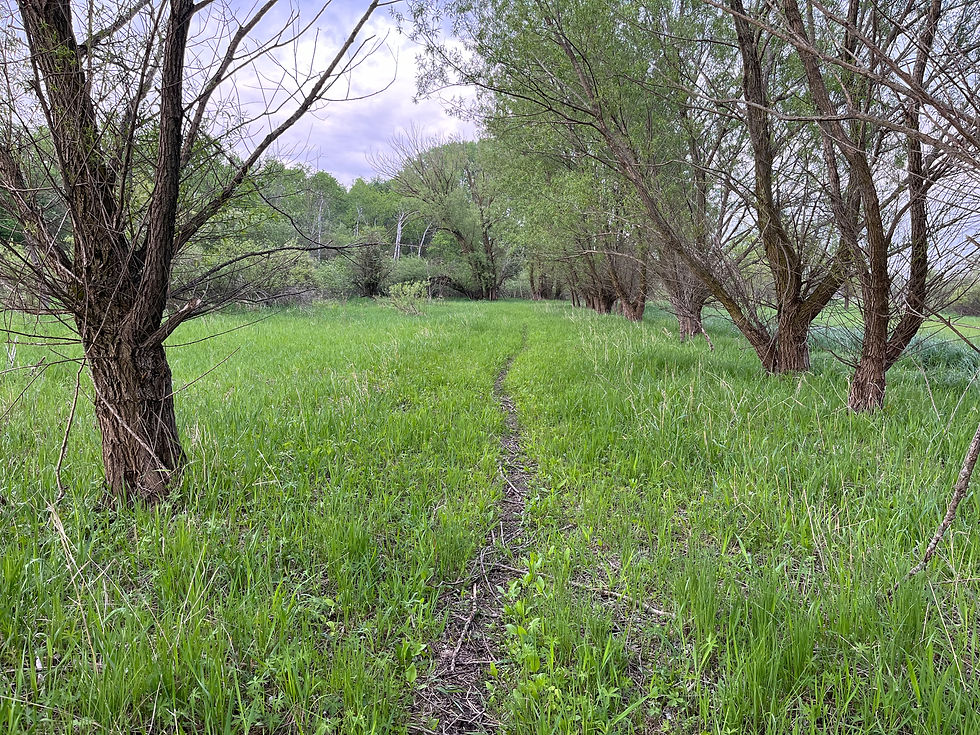
Hoary puccoon (Lithospermum canescens) is currently blooming across Faville Prairie with golden-orange flowers that glow warmly in the setting sun.

Yellow star grass (Hypoxis hirsuta) can be found growing low to the ground.

The purple tones on these dogwood leaves highlight the patterns of the leaf veins.
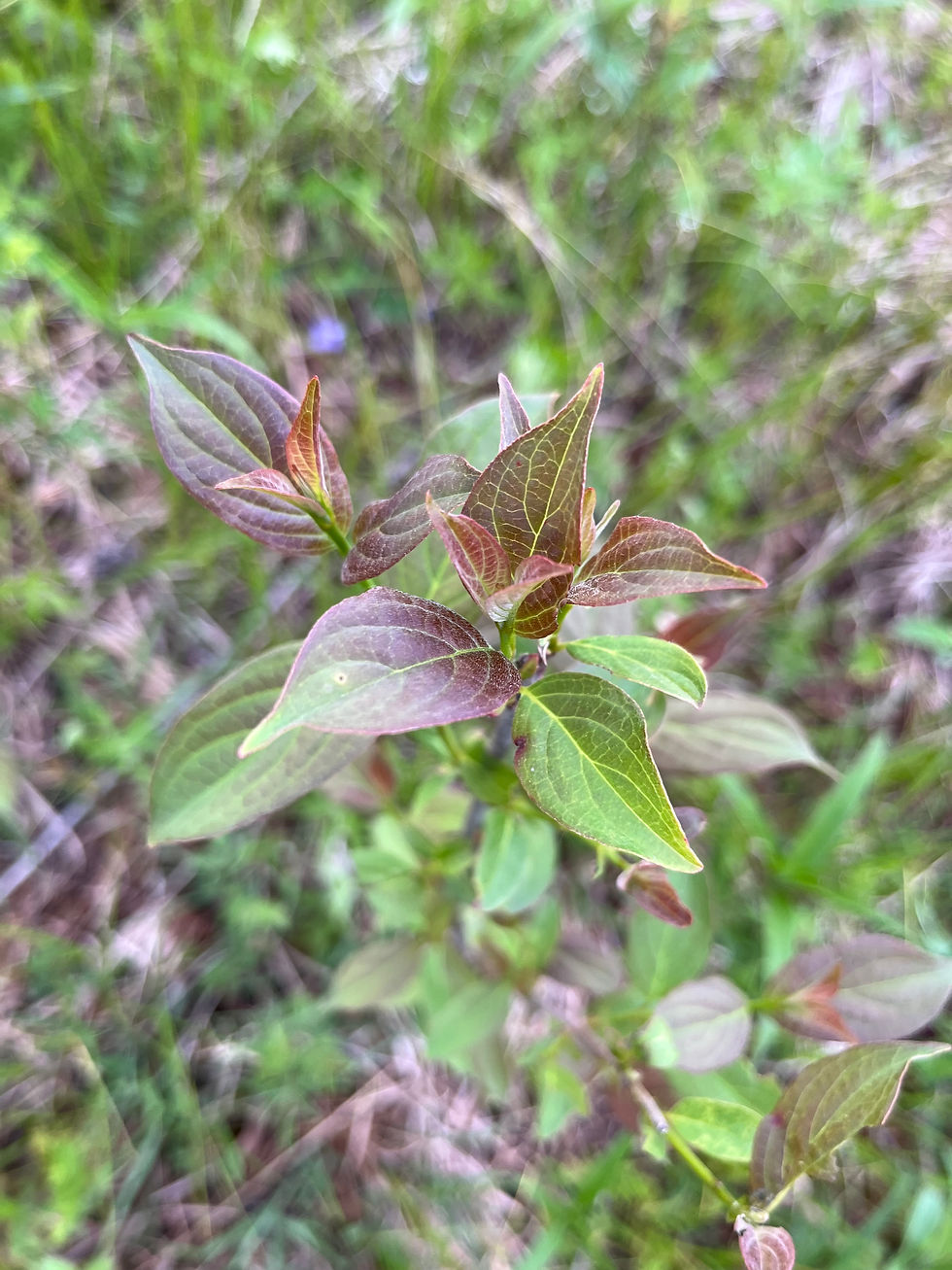
Bastard toadflax (Commandra umbellata) is a hemiparasitic plant that parasitizes the roots of other plants through haustoria, highly modified root structures for absorbing nutrients.

Swamp saxifrage (Micranthes pensylvanica) has a basal rosette of leaves and a hairy stem.

Prairie phlox (Phlox pilosa) adds some variety to the otherwise yellow blooms of early spring. The color of its flowers ranges from white to purple, and the shape is ideal for butterflies to drink its nectar. Prairie phlox has an invasive lookalike, Dame's rocket (Hesperis matronalis), which has four petals instead of five.

Wood betony, or Canadian lousewort (Pedicularis canadensis), is also growing here, attracting bumblebees that buzz in circles around the patches of pale yellow flowers to drink nectar and collect pollen in the last productive hour of their busy day.
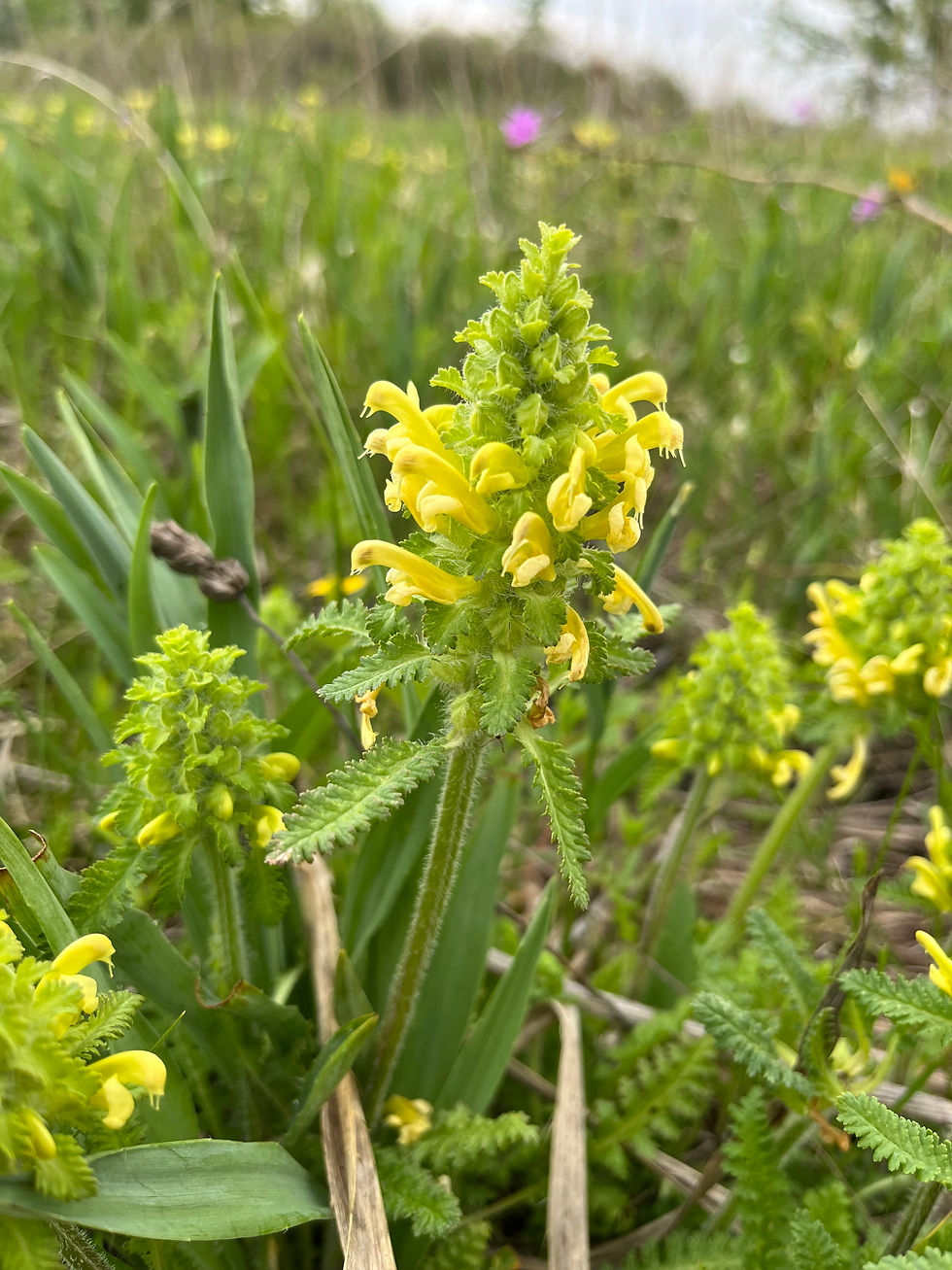
The pollen, which is gathered in the pollen baskets on their hind legs, is similarly pale in color.
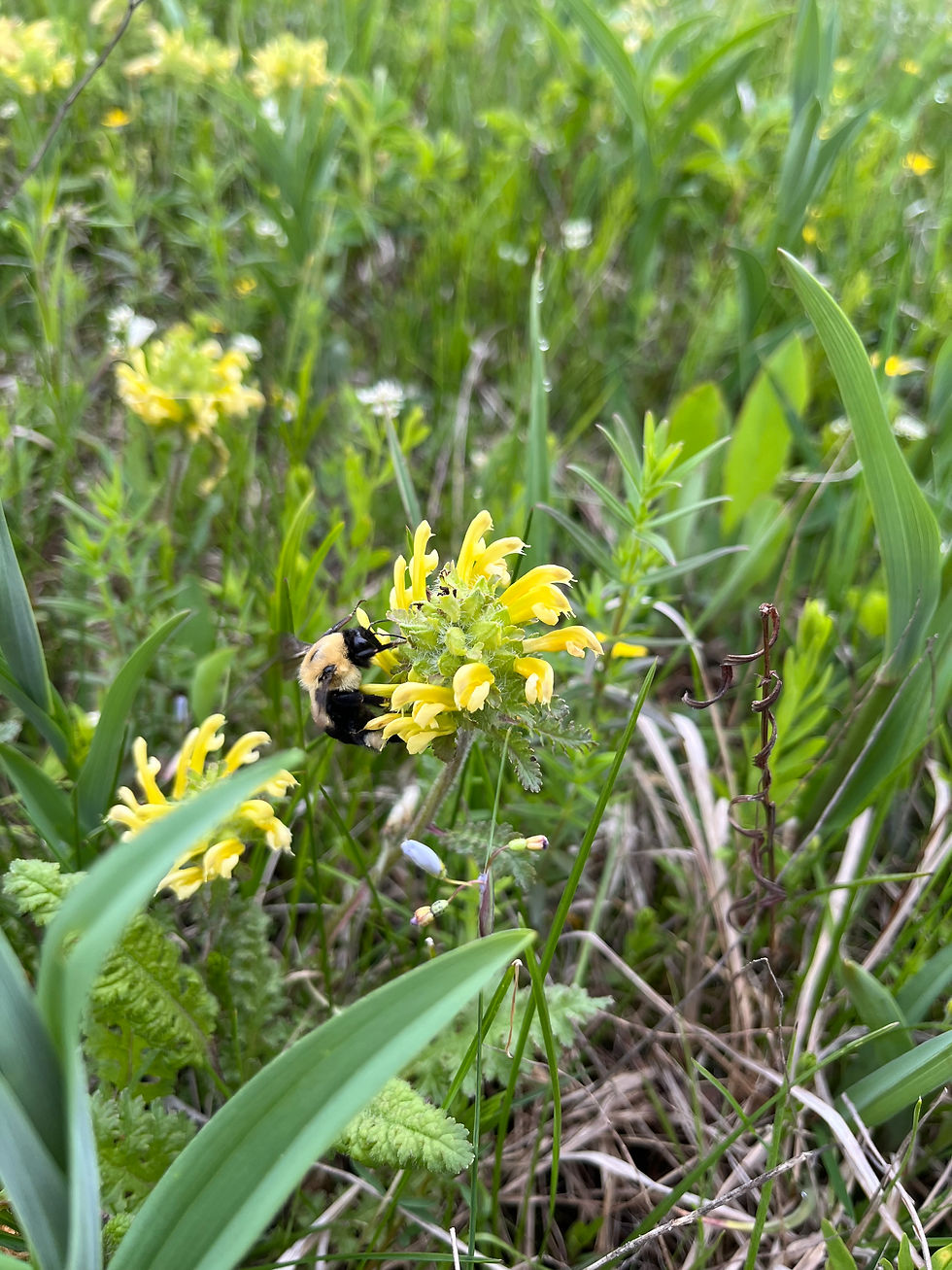
We spot a large snapping turtle lying motionless at the surface of a pond.

Willows (Salix) release their fluffy seeds to the breeze.
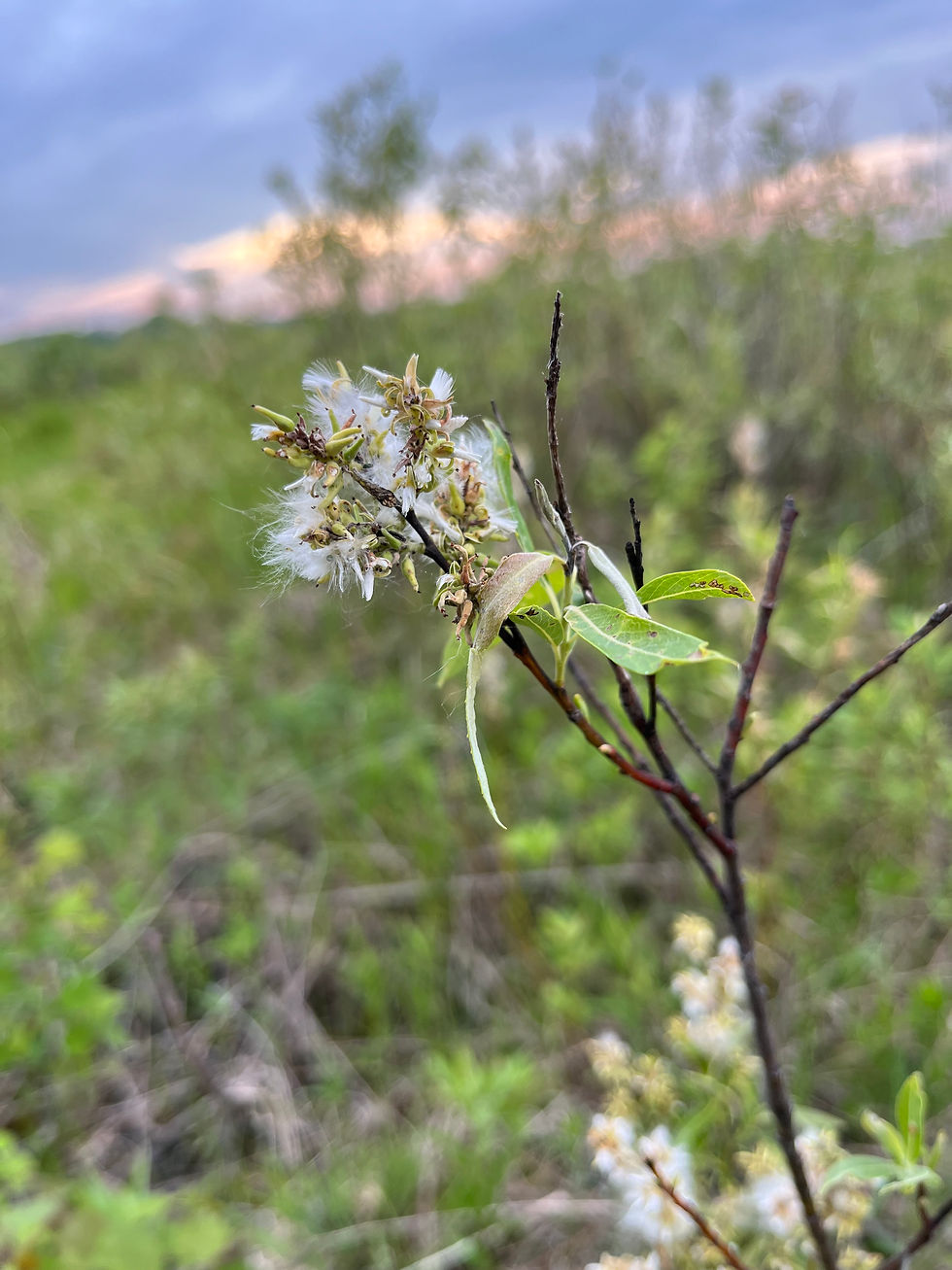
A giant bur oak (Quercus macrocarpa) dominates the horizon to the west. It's fallen lower branch, now beginning to crumble into the earth as it breaks down, offers an appealing place to rest and watch the sunset. Bur oaks are the primary tree species associated with the oak savannas of the Midwest, which are now one of the rarest plant communities in the region.




Just beautiful! 🥰